DROPS Big Merino
Superwash treated extra fine merino wool
from:
6.10CAD
per 1.8 oz
Content: 100% Wool
Yarn Group:
C (16 - 19 stitches)
/ 10 ply / aran / worsted
Weight/yardage: 1.8 oz (50 g) = approx 82 yds (75 m)
Recommended needle size: US 8 / 5 mm
Gauge: 4" x 4" / 10 x 10 cm = 17 sts x 22 rows
Care: Machine wash on gentle cycle warm 40°C / 104F. Don’t use fabric softener. Dry Flat
Superwash: yes
Made in: EU
Raw material origin: Wool from South America
This yarn has an Oeko-Tex® certification (certificate number 25.3.0110), Standard 100, Class I from the INNOVATEXT TEXTILE ENGINEERING AND TESTING, HUNGARY. This means that is has been tested for harmful substances and is considered safe in human-ecological terms. Class I is the highest level, and it means the yarn is suitable for baby articles (ages 0-3).
Spun from multiple thin strands of 100% extra fine merino wool, which give the yarn its elasticity - DROPS Big Merino’s main characteristics are its softness, volume, elasticity and even result, which makes it ideal for knitting structured patterns such as cables.
It is this special construction of the yarn that makes it extra important to use the correct tension in your project, so use a tight tension rather than a loose one. DROPS Big Merino is also superwash treated and therefore machine washable and suitable for everyday use; but when washing your garments you must take extra care and and follow closely the care instructions.
DROPS Big Merino is spun from fibers from free-range, mulesing free animals from South America and is Oeko-Tex Standard 100 certified.
Read more about our products' sustainability here
Please be aware that the colours shown may vary from screen to screen in the same way that shades may vary slightly from dye lot to dye lot.
How do I care for this yarn?

Machine wash on gentle cycle warm 40°C / 104F. Don’t use fabric softener. Dry Flat
All our super wash treated merino yarns should be washed in the machine, using a gentle cycle program. That being said, there are a few more tips that are extremely relevant when it comes to caring for this yarn:
- Machine wash - separately - using a gentle cycle program at 40ºC, with a light centrifugation (about 800rpm). Only use detergents without enzymes and optical brighteners.
- NEVER use fabric softener (the wool fibers become too soft and can slide apart).
- NEVER leave the garment to soak/wet in the washing machine for a long period of time.
- To dry the garment, shape it and lay it flat - do not hang - ideally on a warm bathroom floor or on top of a drying rack in a room with good air circulation. Never dry the garment in direct sunlight.
- Never iron the garment directly. Use always a damp cloth between your steaming iron or regular iron and the garment.
Note: If you are washing a project made with this yarn combined with another, the general guideline is to follow the washing instructions for the most delicate of the yarns you are working with.
Do you have a question about this yarn?
See a list of frequently asked questions (FAQ) about our yarns.
1) What type of fibers make the DROPS yarns?
Yarn can be made from a large number of natural and synthetic fibers. DROPS carries mainly yarns made from wool, cotton, alpaca, linen, mohair and silk. Each fiber type has its own qualities, and they are often mixed to take advantage of the best properties of each one. Coarse yarn has the advantage of being stronger and more durable, and finer fibers offers more softness and comfort. Here a bit about the main fibers we carry:
Alpaca:
Alpaca fleece is the natural fiber harvested from an alpaca, and it is similar in structure to sheep wool fiber. Its softness comes from the small diameter of the fiber, similar to merino wool. It is a soft, durable, luxurious and silky natural fiber. Yarn made from alpaca fibers does not felt or pill easily, and it can be light or heavy in weight, depending on how it is spun. While similar to sheep’s wool, it is warmer, not prickly, and has no lanolin, which makes it hypoallergenic. Alpacas come in 22 natural colors, with more than 300 shades from a true-blue black through browns-black, browns, white, silver and rose-greys.
Mohair:
This fiber comes from the Angora goats, and its considered a luxury fiber. Mohair yarn is warm as wool, but much lighter in weight; it is durable, dyes well and does not felt easily. Mohair fibers have also a distinctive luster created by the way they reflect light. Despite being a hard fiber, mohair is usually spun into a very fluffy yarn, resulting in airy and lustrous garments.
Wool:
The wool fibers comes from the skin of sheep and are relatively coarse fibers. Two striking characteristics of wool are its susceptibility to heat and its felting property, which is caused by the scales on the surface. Depending upon the breed of sheep, the appearance of the wool varies.
Wool from Merino sheep is considered the finest type of wool, having as characteristics that is finely crimped and soft. All the Merino wool in the DROPS yarns has its origins in South America, coming from sheep that have not been subject to Mulesing.
Pure new wool is wool made directly from animal fleece, and not recycled from existing wool garments.
Machine washable wool is wool treated chemically to minimize the outer fuzzy layer of the fibers, and be therefore fitable for machine wash (see Superwash).
Silk:
The silk fiber is a fine continuous fiber produced from the cocoon of a moth caterpillar known as the silkworm. While silkworm is cultivated, the wild or tussah silk is obtained from uncultivated silkworm cocoons. Silk fiber is one of the strongest natural fibers and makes a wonderful knitting yarn. It blends really well with other fibers, especially wool. Silk also dyes beautifully with natural dyes.
Vegetable fibers:
There are several varieties of vegetable fibers, found in the cell walls of plants or vegetables. Of all the varieties, two are recognized as major knitted or textile fibers. They are cotton and linen.
Cotton is the fiber surrounding the seeds in a cotton pod, and it is almost pure cellulose. Cotton is usually white in color but there are green and brown varieties as well. The cotton fiber is most often spun into yarn or thread and used to make a soft, breathable textile that is good for summer clothing and accessories, making a weaker yarn than silk or linen but stronger than wool.
Mercerized cotton is cotton that has been through a mercerization treatment. This treatment gives cotton fabrics and threads a lustrous yarn that is more lustrous than conventional cotton. It is also stronger, takes dye a little more readily, makes the yarn more resistant to mildew and reduces lint. It also may not shrink or lose its shape as much as "regular" cotton.
Linen is a fiber derived from the stalk of the flax plant that is durable and stronger than any other fiber. The linen fiber is relatively soft, straight and lustrous and becomes more beautiful with age. Linen is more comfortable to wear in hot temperatures than cotton, due to the fact that it absorbs moisture better and dries more quickly.
Other materials used in our yarns include synthetic fibers such as acrylic, viscose, polyamide (nylon) and polyester.
3) What type of information can I find on the DROPS yarn labels?
All DROPS yarn labels include information about fiber content (wool, cotton, etc.), weight in grams and ounces, length in meters and yards, washing instructions and symbols (explained here), color number, dye lot number and yarn group information.
4) What are the DROPS yarn groups?
All DROPS yarns are classified into 6 different thickness groups (A to F). Yarns in a same group have similar knitting tension/gauge, and can therefore be interchanged in patterns; however the length may be different, so when substituting always calculate the amount of meters/yards needed for the pattern to know the amount of yarn you need to get.
5) Can I use a different yarn than the one mentioned in the pattern?
Yes, as long as the yarn can be worked in the same knitting tension/gauge. Always swatch to make sure you get the same number of stitches in width and rows in height as given in the pattern.
Remember that different yarns with different textures, will give the garment different looks. The yardage/length may also be different, so when substituting always calculate the number of yards needed, in order to know the amount of yarn you need.
Read more about how to calculate the amount of an alternative yarn - and how to replace 1 thread of a yarn with 2 or more of another, here.
6) What does it mean when a yarn is “Superwash”?
A superwash wool is a special wool product that has been treated or processed in a way that allows it to be machine washable. Many people are afraid to work with wool because it is so easy to shrink (though some shrink wool on purpose) and superwash wool can allow them to work with great fibers without worry. (Read more here).
7) What does “Oeko-Tex® certified” means?
The Oeko-Tex® Standard 100 was introduced at the beginning of the 1990s as a response to the needs of the general public for textiles which posed no risk to health. The Oeko-Tex® Standard 100 is a globally uniform testing and certification system for textile raw materials, intermediate and end products at all stages of production. The test for harmful substances comprise substances which are prohibited or regulated by law, chemicals which are known to be harmful to health, and parameters which are included as a precautionary measure to safeguard health.
For more info go to www.oeko-tex.com
10) How accurate are the colours on the shade cards online?
When obtaining images for the shade card, we do our best to achieve the highest level of color accuracy. Unfortunately, we cannot guarantee how images will appear on your computer screen. Every monitor displays color differently, some colors might look darker than they really are, and some colors might be more saturated on some screens. If you experience that many of the yarn colors looks different on your screen than the actual color of the skeins, you can adjust the setting on your monitor.
11) What is a micron? What does super fine / extra fine mean?
The fineness of yarn fibers is measured in microns (thousands of millimeters). Super fine alpaca wool is 26-28 microns. Fine merino wool is less than 21.5 microns and extra fine merino is under 19.5 microns. The less microns the softer and more delicate a quality can be, the more microns the more hard wear the quality will be.
12) Why are the colors in my skeins of print yarn different?
The reason why two skeins of a same print yarn look different can be 1) that both skeins are part of different dye lots; 2) that the skeins have been dyed using a technique called "magic print" (the one used for example in DROPS Delight), which provides unique patterns and smooth color transitions to each skein, meaning also that within one dye lot, lighter or darker varieties might appear. This is no fault or defect, but part of the yarn's character.
13) My store doesn’t have the color I want, what can I do?
If your DROPS store doesn’t have the yarn color you want, try contacting a DROPS Super Store (the ones with the golden badges) - they will make sure to get a hold of the color even if they don’t have it in stock themselves. See a list of all DROPS stores here.
14) Where can I find a specific dye lot of a color?
Always try contacting your DROPS store first. If they do not have the dye lot you want we recommend you to ask other knitters and crocheters in the DROPS Workshop in Facebook or Ravelry, which may have the dye lot in their stash and might be willing to part from it.
Yarn sheds because there's not enough twist to hold all of the fibers together. All yarns have excess fibers (from production) that might come off as lint or shedding, in varied degrees that depend on how the yarn is spun. Brushed yarns ("hairier" yarns) like DROPS Melody, have more of these loose fibers than other yarns, and therefore shed more. Shedding also depends on what is worn under or over the garment, and whether this pulls at the yarn fibers. It’s therefore not possible to guarantee that there will be no shedding.
Below are some tips on how to get the best result when working with hairier yarns:
- When the garment is finished (before you wash it) shake it vigorously so the looser hairs come off. NOTE: do NOT use a lint roller, brush or any method that pulls at the yarn.
- Place the garment in a plastic bag and put it in your freezer - the temperature will cause the fibers to become less attached to each other, and excess fibers will come off easier. Leave in the freezer for a few hours before taking it out and shaking it again.
- Wash the garment according to the instructions on the yarn label. Garments worked with hairier yarns usually need to be shaken once dry after washing, so that the hairs rise and any excess fibers can come off.
Pilling is a natural process that happens to even the most exclusive of fibers. It's a natural sign of wear and tear that is hard to avoid, and that is most visible in high friction areas of your garment like a sweater's arms and cuffs.
You can make your garment look as new by removing the pilling, using a fabric comb or a pill/lint remover.
How can I replace this yarn?
If you are looking to replace this yarn with another DROPS yarn, you can use another yarn within the same yarn group, or try our yarn converter!
Other yarns in Yarn Group C
Read more about replacing yarn.Have a problem with the DROPS yarn you purchased?
When you purchase yarn from the shade cards or patterns on our site, you are not buying directly from DROPS but from one of the hundreds of DROPS stores around the world. It is therefore important that you take contact with the DROPS store where you bought the yarn, and that you save the labels of all the skeins you purchased (they are your warranty).
The DROPS store you contact will assist you and escalate the claim if necessary. Find a list of DROPS stores here.
Comments / Questions (225)
![]() Jocelyn Blink wrote:
Jocelyn Blink wrote:
I would like to knit from an old pattern that used Beehive Shetland Style Chunky, which is a discontinued wool. I would be very happy to use a Drops wool and wondered whether the Drops Big Merino would be good? The information for the Beehive Chunky is as follows: Gauge: 12-15 stitches/10 cm Tension: 7.5 stitches and 10 rows = 5 cm with 6 mm needles Could you please recommend a Drops yarn? Many thanks, Jocelyn
17.04.2020 - 17:11DROPS Design answered:
Dear Mrs Blink, these informations about yarn alternatives could help you - you will find our yarn sorted by groups here - it might be wise to contact your DROPS store for any further individual assistance choosing the right matching yarn. They will help you even per mail or telephone. You can also join our DROPS Workshop, where other knitters might share their experience with you. Happy knitting!
20.04.2020 kl. 11:43
![]() Annemie Vandeweerdt wrote:
Annemie Vandeweerdt wrote:
Hallo Ik ben zelfstandige en verkoop handgehaakte producten. Kan ik via jullie site het Drops garen kopen aan groothandelprijzen? Bedankt Annemie
01.04.2020 - 13:39DROPS Design answered:
Dag Annemie,
Excuses voor de late reactie. Als je garens van ons wilt gaan verkopen in je winkel, dan kun je het beste even contact opnemen met het formulier op deze pagina.
18.06.2020 kl. 08:57
![]() Maria wrote:
Maria wrote:
Stickade en tröja i detta garnet. Underbar och passade perfekt ........innan jag tvättade den. 40 grader på ullprogrammet, som med alla mina ylletröjor, inget sköljmedel och plantorkades. Efteråt är den oanvändbar, fylligheten i garnet borta, töjd på längden, ärmarna 10 cm längre, liksom tröjan. Ser att andra skrivit samma kommentarer. Pengar och framförallt bortkastad tid. Hur ska man göra?
16.01.2020 - 21:44
![]() Christiane Britzkow wrote:
Christiane Britzkow wrote:
Können Sie mir sagen wo die Schafswolle herkommt und ob sie von nicht gemulesten Schafen stammt? Vielen Dank und liebe Grüße Christiane
05.01.2020 - 19:45DROPS Design answered:
Liebe Frau Briztkow, Alle Merinowolle von DROPS stammt aus Südafrika und Südamerika von Schafen die nicht Mulesing ausgesetzt waren. . Viel Spaß beim stricken!
06.01.2020 kl. 09:57
![]() Veronique wrote:
Veronique wrote:
Je veux tricoter un modéle avec des aiguilles 5. Quelles sont les laines les plus douces? C'est pour un enfant.
01.01.2020 - 11:55DROPS Design answered:
Bonjour Véronique, nos laines mérinos sont particulièrement douces. N'hésitez pas à bien faire votre échantillon au préalable, lavez-le en suivant bien toutes les indications de cette page + les consignes générales et ajustez la taille de vos aiguilles si besoin. Pour toute assistance individualisée, votre magasin saura vous renseigner, même par mail ou téléphone. Bon tricot!
02.01.2020 kl. 16:30
![]() Graciela wrote:
Graciela wrote:
Donde lo encuentro en Perú?
12.10.2019 - 01:37
![]() Fiona Lee wrote:
Fiona Lee wrote:
I am making a beautiful shields sweater with your drops Big Marino uni colour in Navy. I’m delighted at how nicely it is knitting up but very disappointed that out of five balls, there have been nine times when the yarn has been knotted and I have had to cut and rejoin wool. I’m sure this is not a normal occurrence. Maybe it was just the batch. I have the batch numbers if you are interested but I believe this should get the attention of quality control. I look forward to hearing from. You.
26.09.2019 - 18:17
![]() Mélinda Ayrault wrote:
Mélinda Ayrault wrote:
Bonjour, avez vous déjà pensé à proposer vos pelotes en 50 ET 100 g? Les 50g c'est bien pour les petits projets mais dès qu'on passe à de plus grand, cela fait plus de fils à rentrer (je pense ne pas être la seule à avoir cette partie du tricot en horreur). En tout cas cette big mérinos est un régal à tricoter et un plaisir à porter
20.08.2019 - 11:32
![]() Mélinda Ayrault wrote:
Mélinda Ayrault wrote:
Bonjour, avez vous deja penser a proposer vos pelote en 50 ET 100 g? Les 50g cest bien pour les petit projet mais des qu'on passe a de plus grand, cela fait plus de fils à rentrer (je pense ne pas être la seule à avoir cette partie du tricot en horreur). En tout cas cette big mérinos est un régal à tricoter et un plaisir à porter
20.08.2019 - 11:31
![]() Ingrid wrote:
Ingrid wrote:
Delicious yarn to crochet with. Using a 5.5mm hook to make two beautiful lacy blankets ('Sterre Deken') in Forget-Me-Not. Waited for ages for the yarn to come in the sale, as I wanted 80 balls!! Now, at £2 a ball, obviously ridiculously good value. Would easily give 5 stars, but it is going to lose one and is getting 4**** for the number of knots in the yarn. Am only on my third ball, but so far two knots in every ball, which is annoying.
25.05.2019 - 11:45
![]() Patricia Thienpont wrote:
Patricia Thienpont wrote:
Hello, weet iemand of de webwinkel 'Shopgeluk' wel echt bestaat? Ik bestelde er wol op 24 jan 2019 en heb nog steeds niets ontvangen en ook geen bericht gekregen. Mijn bestelling staat op de site nog steeds als 'in behandeling', heb ook al een mailtje gestuurd maar geen reactie. Ook gebeld en kom op een mailbox terecht.
04.02.2019 - 09:49
![]() Ines wrote:
Ines wrote:
Cuándo vais a ampliar la gama de colores de Big Merino y Merino Extra Fine? Gracias
28.11.2018 - 15:24DROPS Design answered:
Hola Inés. No tenemos disponible información sobre la renovación de colores de las lanas e hilos. En estas secciones puedes encontrar algunas soluciones a tus dudas sobre los patrones publicados.
21.04.2019 kl. 13:22
![]() Eva Schmidt wrote:
Eva Schmidt wrote:
Kan Merino extra fine 100% wool bruges til filtning?
17.11.2018 - 12:34
![]() Jeanne Reginster wrote:
Jeanne Reginster wrote:
Bonjour, Existe-t-il des gammes de fils que l'on peut acheter pour voir les couleurs en vrai ? Avant de passer commande ? Merci d'avance.
07.10.2018 - 14:53DROPS Design answered:
Bonjour Mme Reginster, vous pouvez aller dans le magasin DROPS le plus proche de chez vous ou bien contacter les différentes boutiques en ligne - cf liste, certains d'entre eux proposent, sous conditions, l'envoi d'échantillons. Bon tricot!
08.10.2018 kl. 10:37
![]() Irmgard wrote:
Irmgard wrote:
Liebes Drops-Team, bitte geben Sie mir Bescheid ob Drops Big Merino genauso KRATZFREI ist wie Drops Baby Merino? Für Ihre Antwort im Voraus Besten Dank! Irmgard
28.09.2018 - 17:04DROPS Design answered:
Liebe Irmgard, nehmen Sie am besten bitte Kontakt mit Ihrem DROPS Laden auf - auch telefonisch oder per E-Mail, für solchen individuelle Frage helfen sie Ihnen gerne. Viel Spaß beim stricken!
01.10.2018 kl. 10:15
![]() Merit wrote:
Merit wrote:
Liebes Drops-Team, ich benötige ein KRATZFREIES Garn. Das Drops Baby-Merino erscheint mir sehr geeignet (besonders auch wegen der großen Farbauswahl), ist jedoch zu dünn. Ist Drops Big Merino dieselbe Qualität wie Baby Merino, nur dicker versponnen? Also ist Drops Big Merino auch KRATZFREI? Oder kann ich Baby Merino doppelt verstricken, ohne das es dem Strickbild schadet? Ginge das auf einer Strickmaschine? Herzliche Grüße und vielen Dank im Voraus für die Antwort!
15.09.2018 - 07:54DROPS Design answered:
Liebe Merit, gerne können Sie 2 Fäden Baby Merino anstatt 1 Faden Big Merino ersetzen - lesen Sie mehr darüber hier. Ihr DROPS Laden wird Ihnen auch gerne weitere persönnliche Hilfen mitteilen, nehmen Sie bitte Kontakt mit ihnen auf (auch telefonisch oder per E-Mail). Viel Spaß beim stricken!
17.09.2018 kl. 10:28
![]() Alke Barthel wrote:
Alke Barthel wrote:
I have knitted a Sleeping bag for a Baby. With this question I want to ask if I can wash my finished work in the washing Machine.
22.07.2018 - 09:45
![]() Michela Carnevale wrote:
Michela Carnevale wrote:
Why we should never use the fabric softner?
09.06.2018 - 18:33DROPS Design answered:
Dear Mrs Carnevale, it's a usual rule to remember, do not use conditionner if you want to treat the garment as best as possible. Happy knitting!
11.06.2018 kl. 10:11
![]() Aude wrote:
Aude wrote:
Bonjour, Je tricote souvent la Big Merino et j'aimerais beaucoup trouver dans votre nuancier un rose très pale "rose poudré". Votre rose pale reste un peu vif à mon goût pour des ouvrage de naissance. Pensez-vous qu'on le trouvera un jour dans votre nuancier? Pouvez-vous faire remonter ma demande? Merci beaucoup pour votre réponse
27.05.2018 - 08:55DROPS Design answered:
Bonjour Aude et merci, votre demande a bien été remontée. Bon tricot!
28.05.2018 kl. 10:05
![]() Elena wrote:
Elena wrote:
Buenos días, necesitaría saber si la lana BIG Merino es suave, si no "pica" y cuántos ovillos necesitaría para hacer un cuello o fular de ganchillo. Gracias.
11.05.2018 - 13:46DROPS Design answered:
Hola Elena, la suavidad y si pica o no depende de la sensibilidad de cada persona. está hecho con Merino superwash, tratado para que no pique y sea más suave pero es muy subjetivo. En cuanto a la cantidad, esta depende del modelo que se vaya realizar. Puedes mirar entre los patrones que tenemos con Big Merino las cantidades especificadas en los patrones.
13.05.2018 kl. 13:11
![]() Malin wrote:
Malin wrote:
Stickade en marygenser i drops big merino färg 13 (dyelot 71383) med mönsterfärg 01 (dyelot 46210). Tvättade den enligt anvisningarna, men då blev den ENORMT stor. Hängde ända ner till knäna som ett stort genomskinligt nät. Tvättat om den, och grundfärgen drog ihop och tovade sig lite, mönsterfärgen är fortfarande lös som ett nät. Tröjan är hemsk, och bara att slänga. Varför blev det så här? Och är detta okej garnkvalitet enligt er?
05.05.2018 - 09:17DROPS Design answered:
Hej, då du tvättar ett stickat plagg är det väldigt viktigt att du inte vrider plagget för mycket under tvätten. Efter tvätten ska plagget torka plant i sina riktiga mått. Det får abslout inte hängas upp då det ska torka.
12.06.2018 kl. 13:37MAHUAS wrote:
Hello, Sorry, I'm not sure to be at the good place to ask my question but it's the only I've found. I'm a french knitter and I've bought your wool twice. I like it and I would like to buy it another time but I want to be sure about something important for me : are your wools ethic and responsible about animals and nature ? Thank you for your answearing and sorry, my english is basic. Best regards, Céline
08.03.2018 - 09:34DROPS Design answered:
Dear Céline, you will find here all relevant informations about our yarns. Happy knitting!
08.03.2018 kl. 09:53
![]() Maria wrote:
Maria wrote:
Riktigt irriterande att det är ihopknutet garn i nystanet, mitt första nystan innehöll två sådana och det gör att man inte kan använda hela nystanet, hoppas att detta inte fortsätter.
28.02.2018 - 14:48
![]() Freja Pedersen wrote:
Freja Pedersen wrote:
Hej! Har strikket en trøje med mange snoninger på pind 3,5 -så den er strikket stramt. Har vasket den på uldvask med uldvaskemiddel. Ligge tørret fladt. - Nu er den så 25% bredere end før vask. 100 masker for stor !!! Har brugt 30 nøgler, så den har været dyr. Hvad sker der hvis jeg piller den op og laver en trøje -100 masker . Vil den så vokse igen næste gang jeg vasker. Eller holder "genbrugs garn" størrelsen???
08.02.2018 - 04:05DROPS Design answered:
Hej Freja, det er utroligt svært at svare på. Vasker du den separat på 40 grader UDEN skyllemiddel så skal den ikke vokse i vask. Prøv en gang til, separat og uden vaskemiddel og skyllemiddel og sørg for at den bliver lagt til tørre i de rigtige mål, så skal den altså ikke vokse i bredden. Men det er klart at 30 nøgler 1½kg af dette elastiske garn nok ikke kan undgå at vokse på længden...
19.04.2018 kl. 15:04






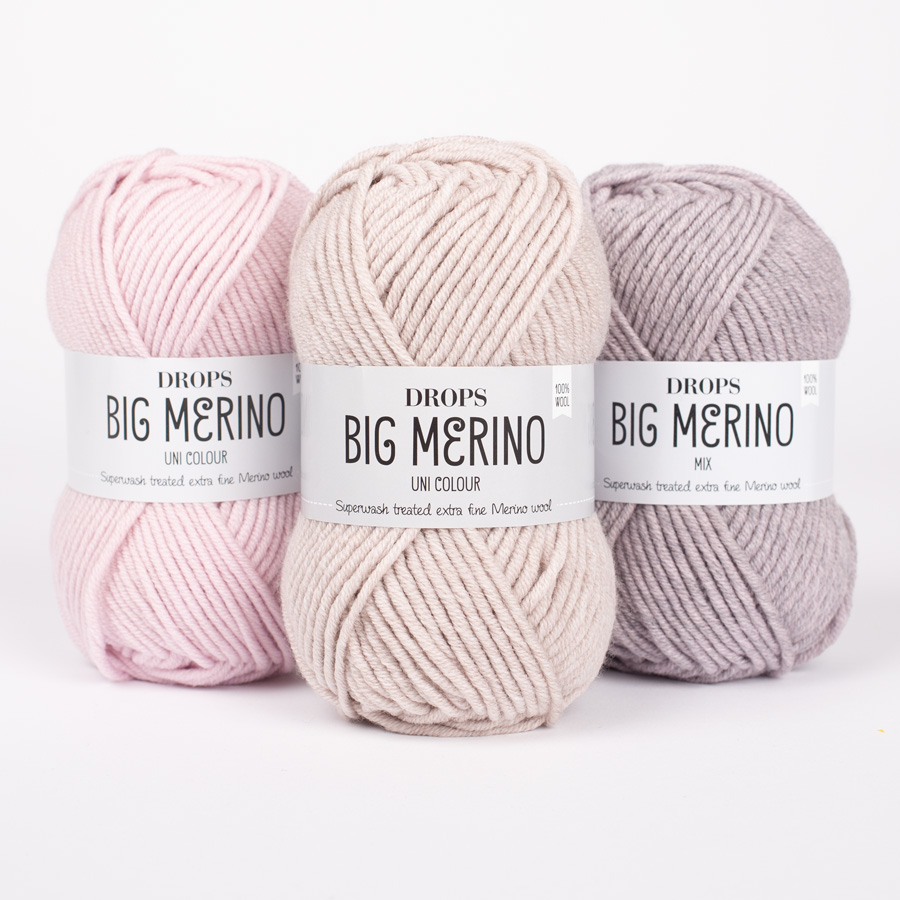
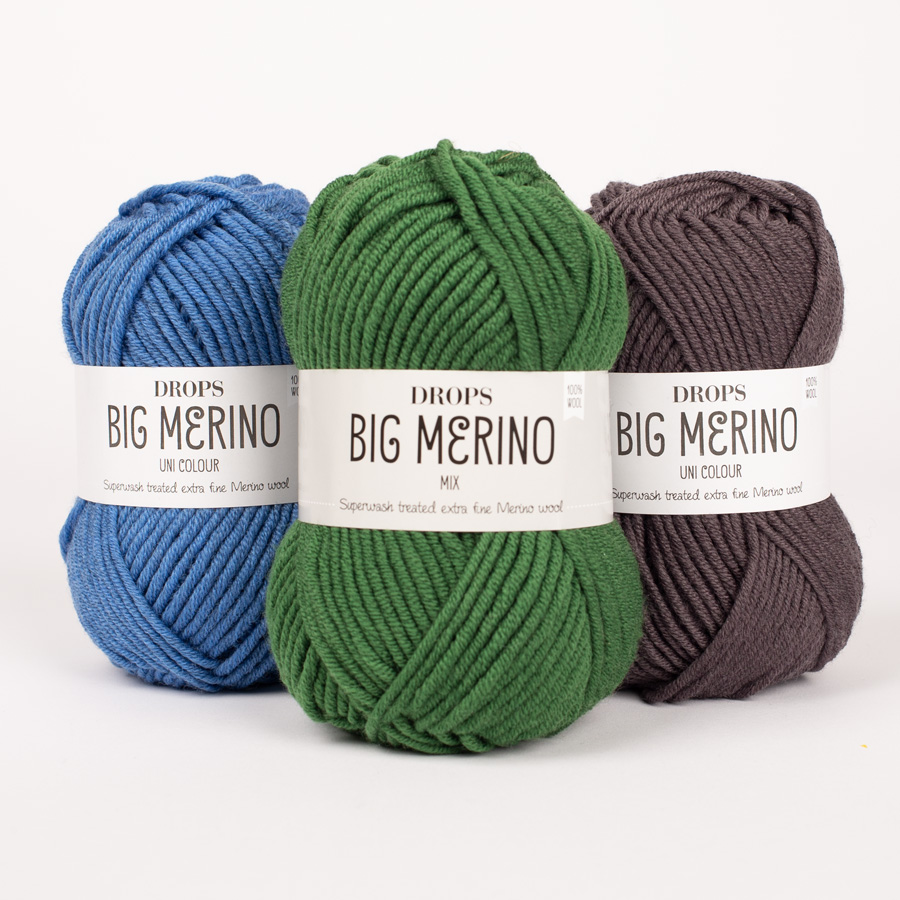

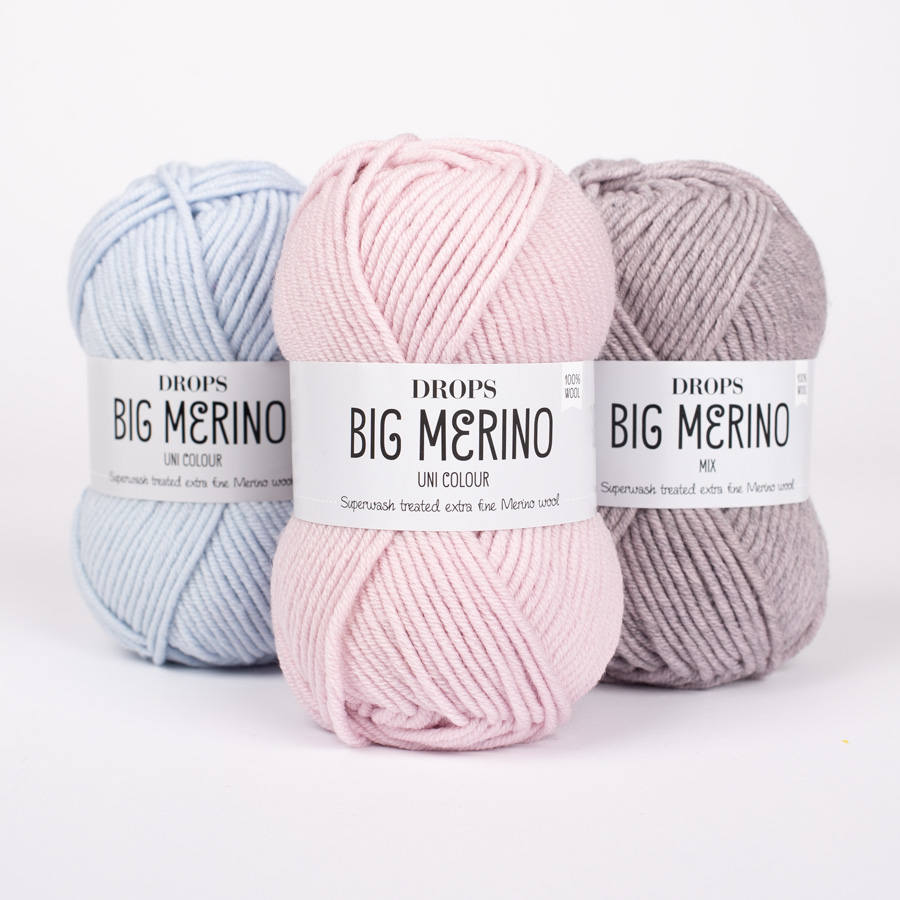
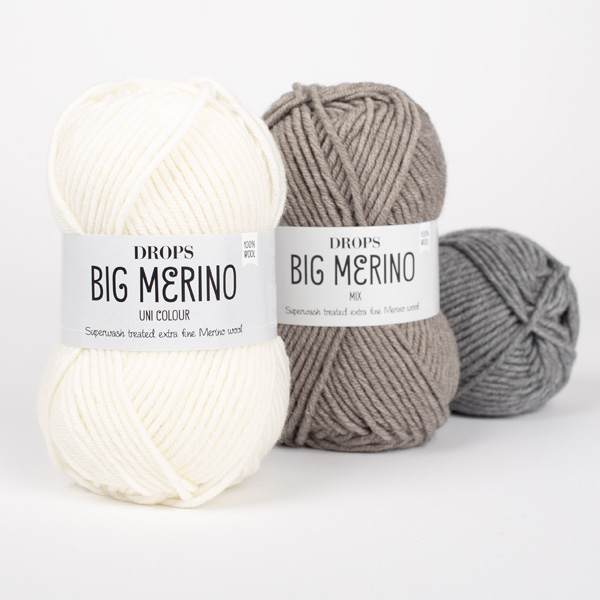
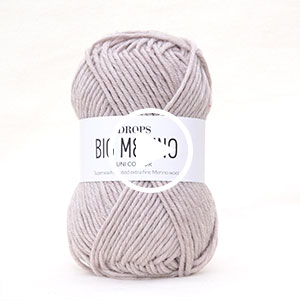

































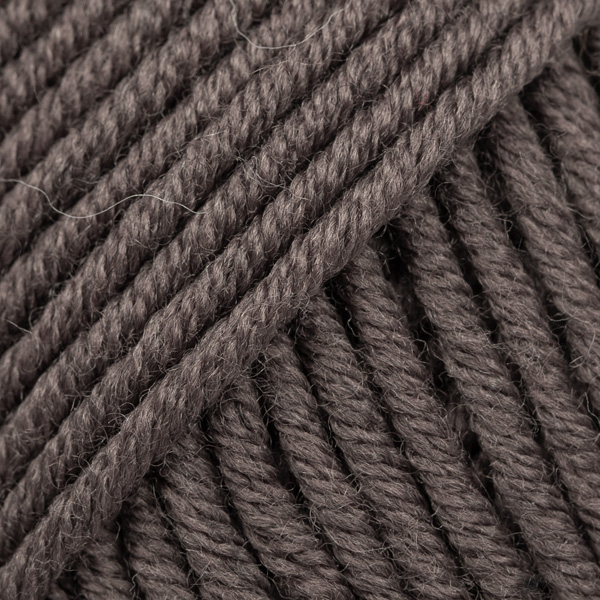













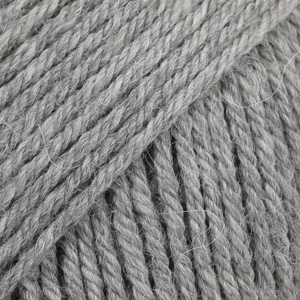










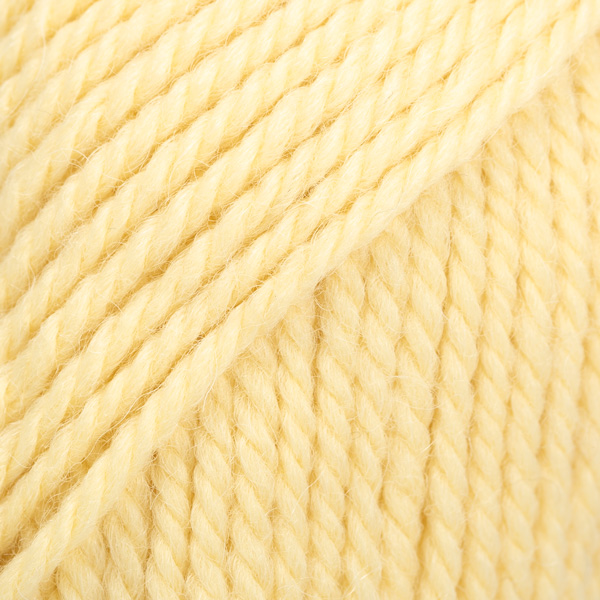





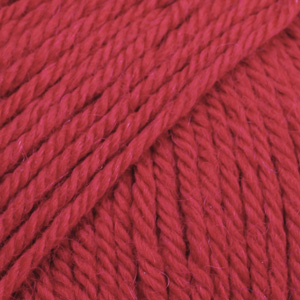





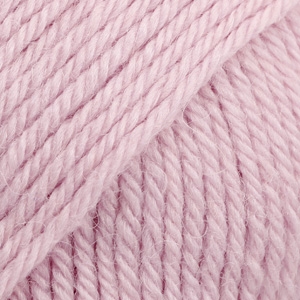
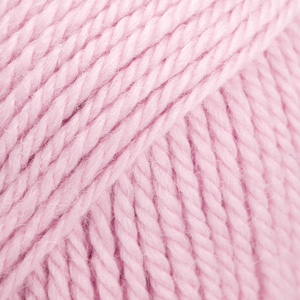

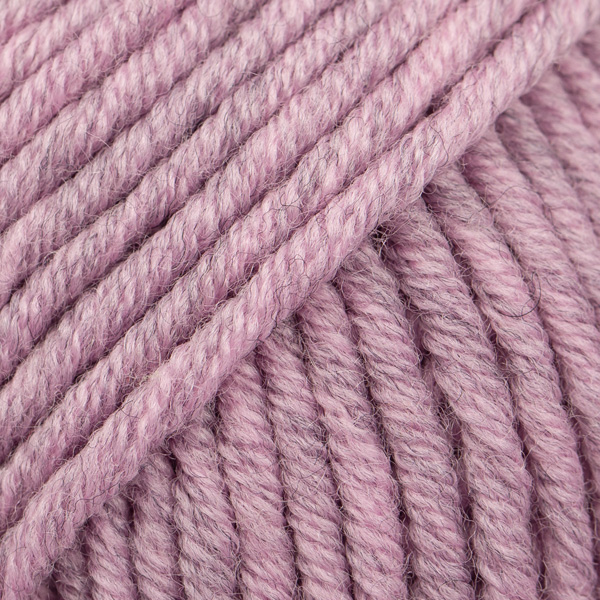

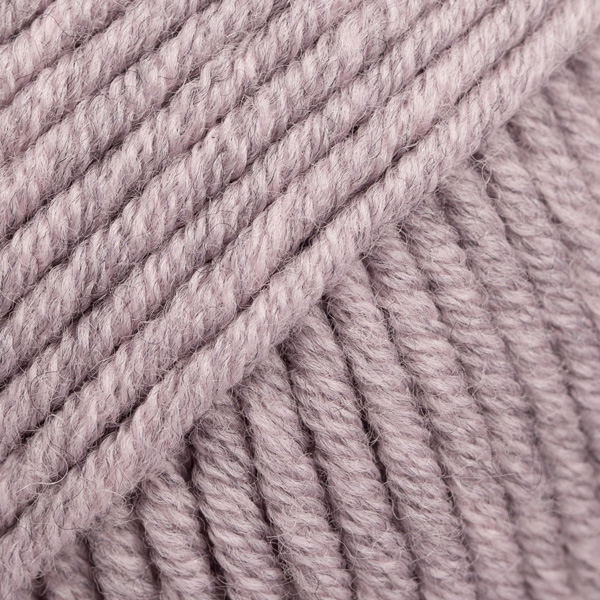






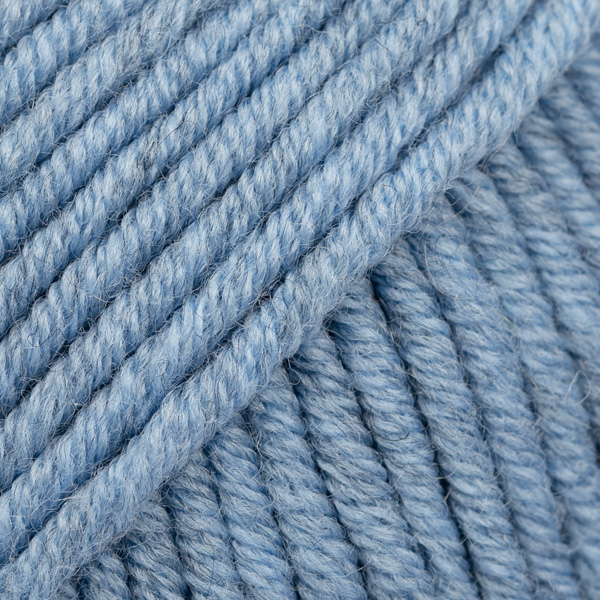

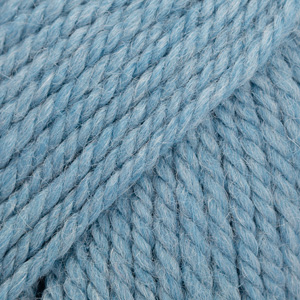


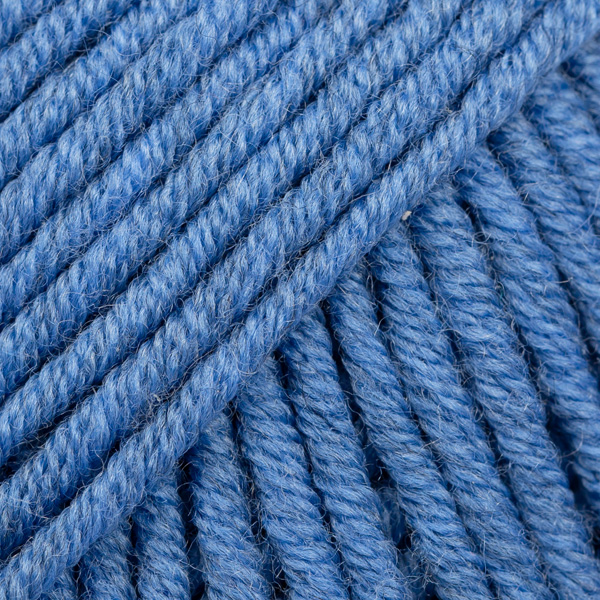











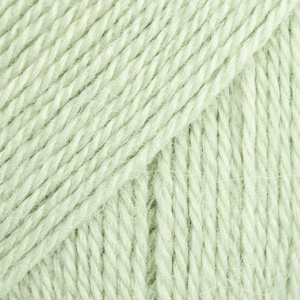






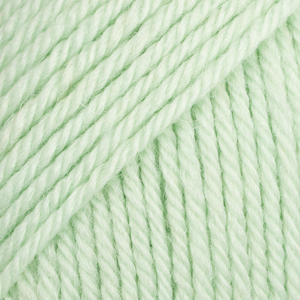








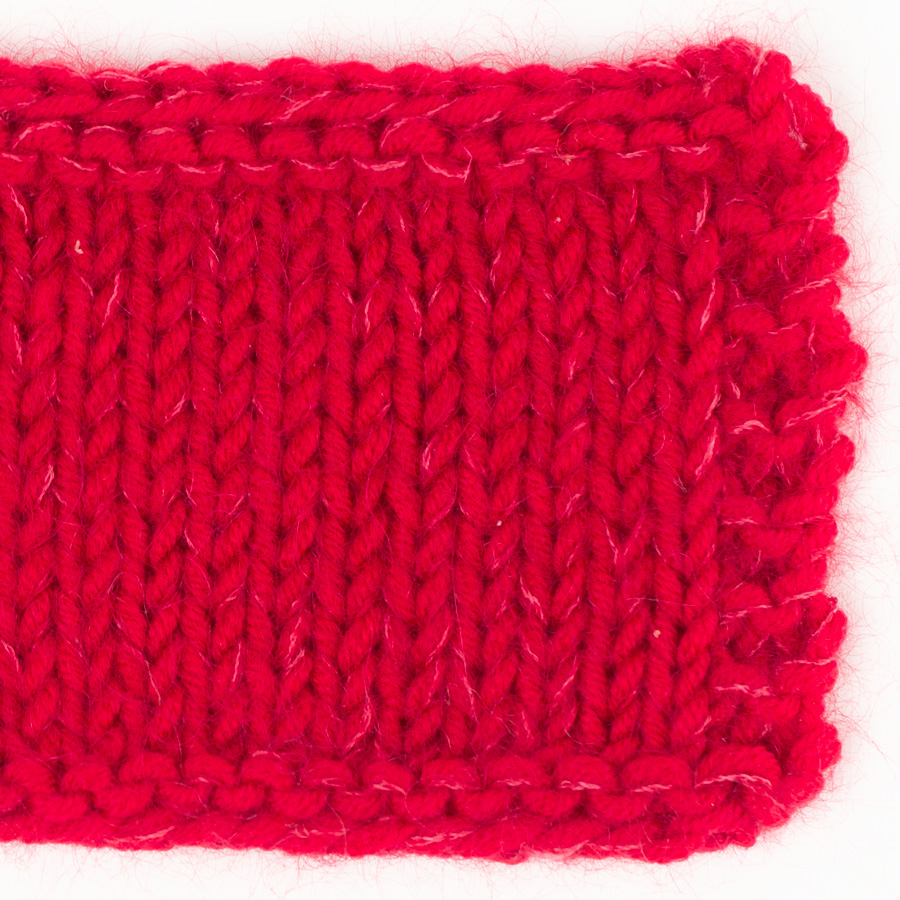
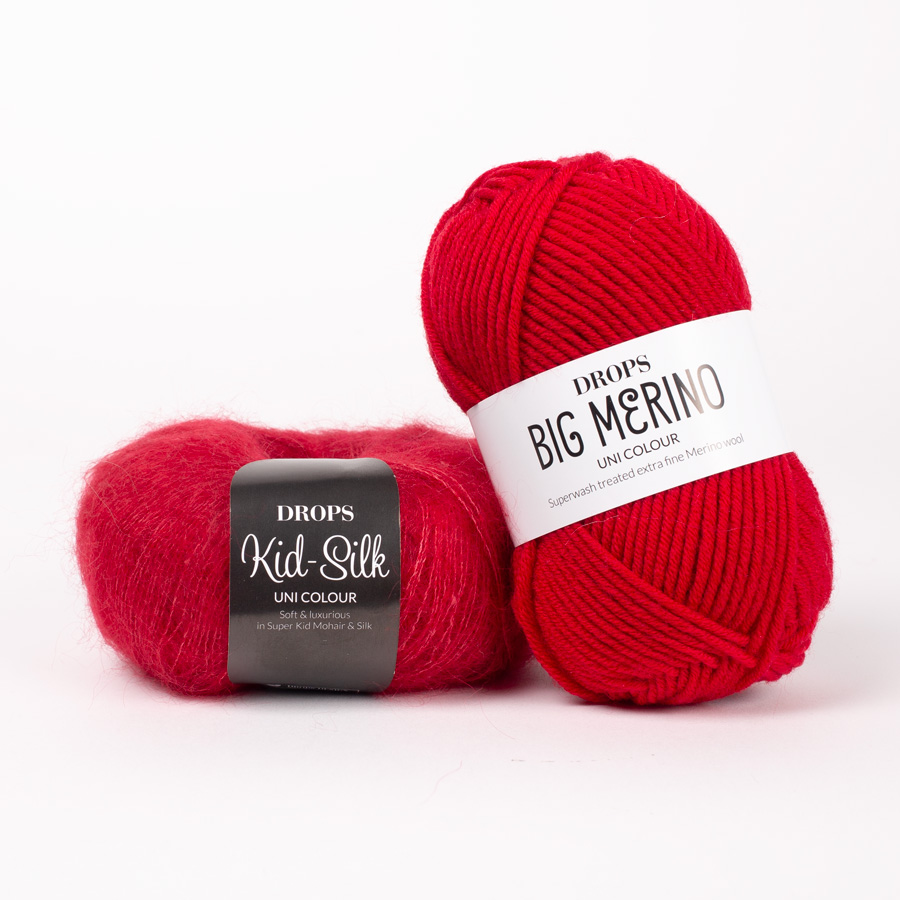

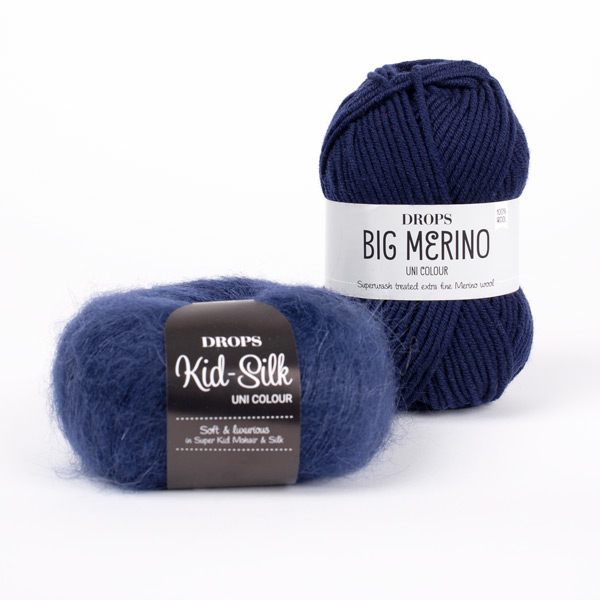
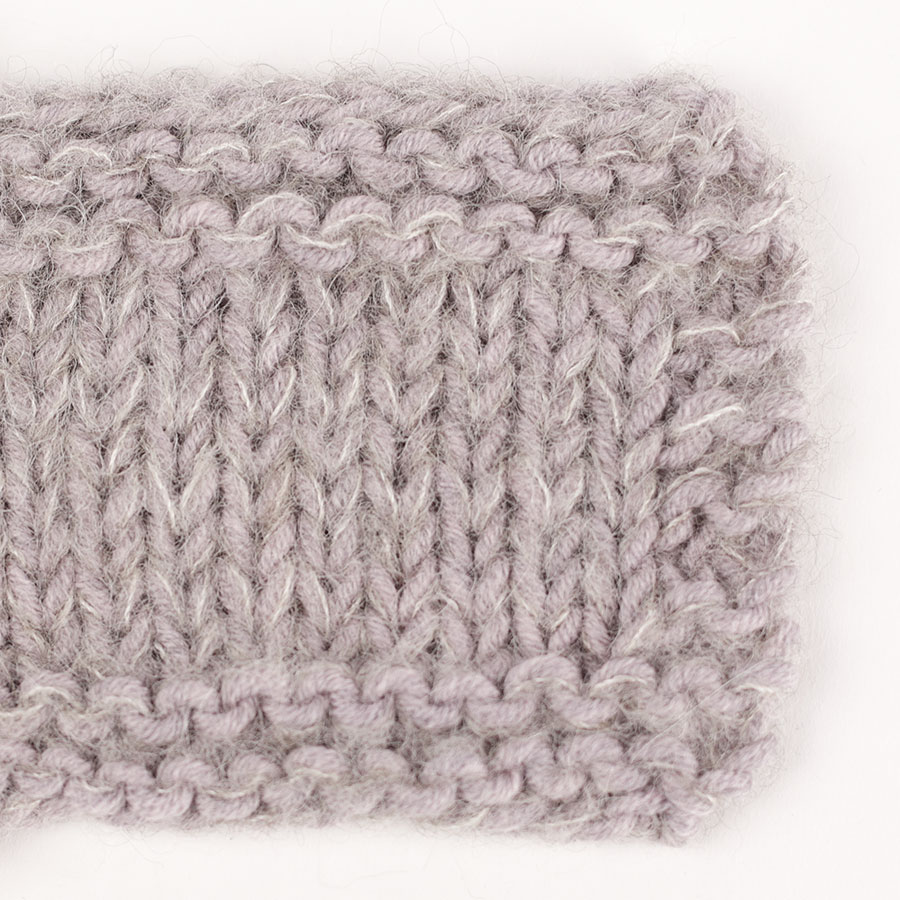
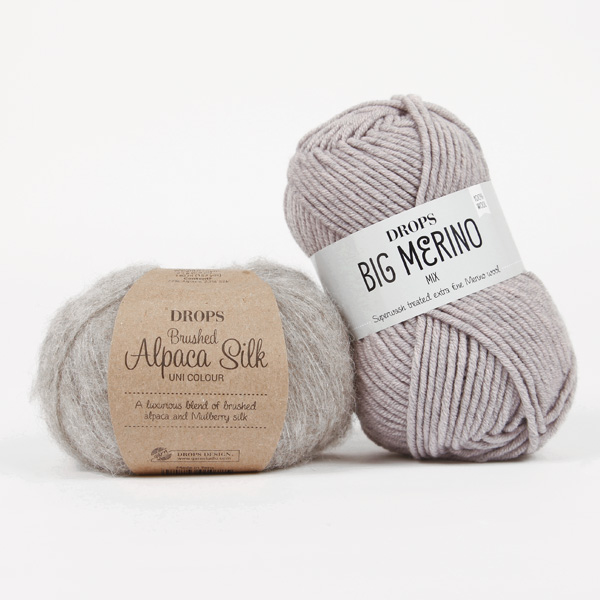









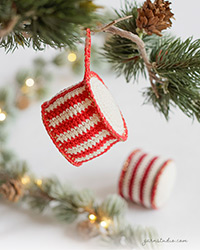





J ai besoin de 2 pelotes de laine dont voici la réf essentiels mérinos Dk - partie28 Fabre 62 n•383995 la couleur est moutarde pourriez vous me la dépanner en commandant sur sur internet Merci de votre réponse
02.04.2020 - 16:03